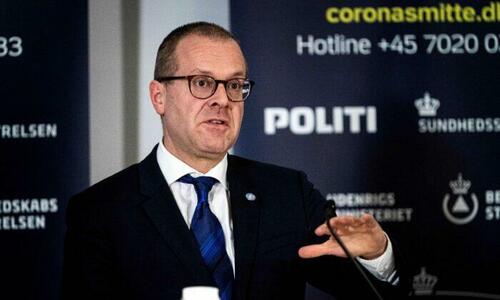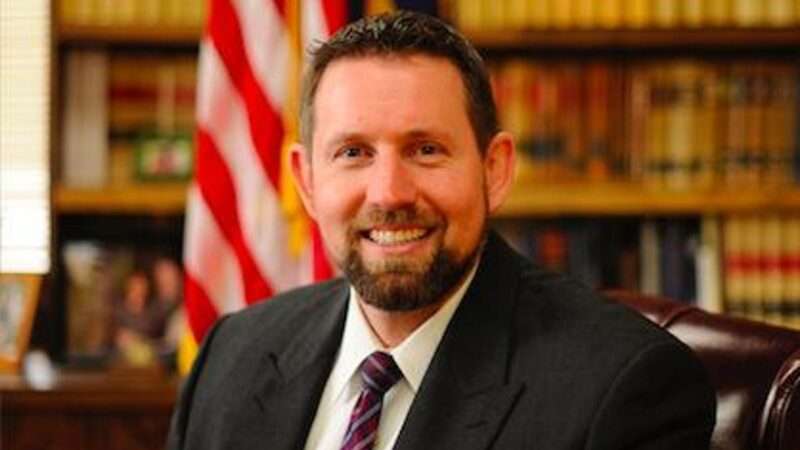By Marnix Arendshorst, Rabobank Macro Strategist focusing on Italy
Summary
- In this piece we take a closer look at the Presidential elections in Italy that started this week and for which current PM Draghi is seen as a key candidate.
- We argue that the role of the President is more than just ceremonial: acting as a guarantor of stability in times of crisis, employing his or her informal power by moral suasion as Head of State and being the key ‘Representative of national unity’ with an important say in EU affairs.
- We look at some of the pros and cons of a scenario where Draghi becomes President.
- We also envisage some of the other options, including a ‘Presidential Government’, a ‘Mattarella-bis’ or the choice for a more ‘classic’ candidate.
The Italian Presidential elections started this week, gathering more attention than usual as Prime Minister Mario Draghi is among the favorites. Last year, during the health and political crisis, he was appointed by President Mattarella to provide political stability in a fragmented climate. And he succeeded: Draghi took care for a promising start of Italy’s Recovery Plan, which helped to unlock the allocated 190 billion euros of the Next Generation EU fund. Which brings us directly to the key issue: will a seemingly ceremonial ‘President Draghi’ have the same added value as the executive Prime Minister Draghi? And is there an acceptable successor as prime minister?
In this note we dig deeper into the role of the presidency and look at the implications if Draghi is indeed elected. One of the questions we ask ourselves is: isn’t the nature of the president much more than just something ‘ceremonial’? In fact, in the current circumstances, a president could have a very proactive role if he or she wields informal powers. Mario Draghi as president? This will mean that he will have to back, or influence, every decision of the new prime minister, who he will appoint, in order to ensure that the reform agenda isn’t watered down and confidence from the EU and financial markets remains secured. Whatever it takes, part II?
The president’s role: more than ceremonial
We believe it is essential to distinguish between the president’s formal and informal powers. The formal powers are ‘institutional’ and laid down in Italy’s post-war Constitution. Experience has shown that these are especially forceful during political crises, of which Italy has had a few in the not-so-distant past. In particular during times of crises, the president should take a proactive role to preserve national unity, to promote government stability and to guarantee compliance with the constitution. As such, the president has the power to dissolve both chambers of the Italian Parliament, to name the prime minister and to appoint Cabinet ministers, and to call for new elections or referendums.
In Box 1 we have summarized the most important formal powers of the president
Box 1 – Most important formal powers of the President according to the Constitution:
- The President represents national unity (Art. 87);
- The President of the Republic appoints the President of the Council of Ministers (the prime minister) and, on his proposal, the Ministers (Art. 92).
- The President of the Republic may send Parliament a reasoned opinion to request that a law scheduled for promulgation be considered anew. If such law is passed again, it shall be promulgated (Art. 74).
- In consultation with the presiding officers of Parliament, the President may dissolve one or both Houses of Parliament (Art. 88).
- The Head of the State may send messages to the parliament.
- The President is commander-in-chief of the armed forces.
- Finally, he presides over the High Council of the Judiciary (Art. 87).
Informal powers: important in EU issues!
Informal powers are, of course, not codified in Constitution. However, particularly if the president commands strong public support and can derive legitimacy from his or her reputation, these can be significant in new situations or in quickly changing contexts, such as when financial markets or European institutions respond adversely to one of Italy’s domestic political crises.
In 2018, for instance, President Mattarella decided to block the appointment of the eurosceptic Paolo Savona as Italy’s Finance Minister. He clearly believed that a finance minister has to be a safe pair of hands and couldn’t guarantee that Savona would adhere to the EU’s treaties and rules in both letter and spirit. Even though Article 117 of the Constitution indeed states that legislative powers shall be vested in the ‘constraints deriving from EU legislation and international obligations’, this is a rather loose interpretation. It shows the president is able to carve out certain informal powers on crucial issues, especially when political actors seem to distance from traditional foreign policy lines or pro-EU approach, Selena Grimaldi (University of Padova) stated in a written exchange with RaboResearch. The opponents of Mattarella’s move argued that it was a clear political veto against an otherwise qualified choice, which was put forward by a democratically elected government.
The president can also intervene in policymaking informally through moral suasion (see also Grimaldi). Even as there is no formal dissent in this case, presidents may suggest modifications on specific parts of a bill before they promulgate. However, formally the president has only the possibility to send an entire bill to the Chamber for reconsideration. Moral suasion has been widely used in the past by previous presidents. For example, Mattarella opted for it when the government dealt with the Recovery Fund. From this perspective, we would argue that this influence is crucial for the EU growth strategy too. An effective use of the Next Generation EU fund in Italy is decisive for paving the road to a permanent EU redistribution mechanism, that is: intra-European fiscal support with national structural reforms. Or, turning the argument upside down: a miss on this front would definitely not be welcomed in many other parts of the EU.
An example of presidential intervention in foreign affairs was president Napolitano’s informal lobby against the prime minister Berlusconi’s non-belligerency treaty with Gaddafi at the beginning of the Libyan war (2011). He insisted that Italy should operate within the framework of the UN and NATO. This informal power was strengthened by Napolitano’s huge popular support.
Looking at the current situation of heightened geopolitical concerns, an informal powerful Italian President in its institutional role can prove meaningful, by playing a role in the conflict with Russia or strengthen unity within the EU. In his political role as PM, for example, Draghi made a plea for a build-up of an European military force to deter Russia.
The 2022 Italian presidential election
The President of the Republic is elected by both chambers of Parliament, which gather in a joint session, as well as 58 representatives chosen by regional councils of each of Italy’s twenty regions. A total amount of 1,009 ‘grand electors’ will cast secret ballots. In the first three rounds, a majority of two thirds is required. From the fourth ballot onwards an absolute majority suffices.
Only twice a candidate was chosen in the first round (Cossiga and Ciampi). It could take around ten rounds to choose a new president, with outliers to 23 rounds. The election process takes several days, potentially one or two weeks.
The candidates: a classic profile, Draghi, a status quo, or…
Based on the backgrounds of the last twelve presidents, according to us a candidate’s profile with the biggest chance to win is a classic combination of:
- independence;
- a long and impressive career within the Italian institutions, such as the Constitutional Court;
- executive experience as a Minister or President of the Chamber of Deputies;
- a legal background, Professor in Law;
- and, above all, broadly acceptable to both left- and right-wing parties.
A classic profile: Amato, Cassene
Starting from this point of vantage, two candidates make theoretically a chance to become the next President-elect from the 3rd of February. They have ‘classic profile’. First, Giuliano Amato; and second, Sabino Cassese.
Amato (83) seems to fit completely in this profile. He was Prime Minister twice (appointed by President Ciampi, the only president with a background in banking), a minister in several different governments, a judge of the Constitutional Court and a university professor. A bonus nowadays is that he is seen as a ‘European’ who believes that the ‘European identity strengthens the Italian identity’.
Sabino Cassese (85) is a former judge of the Constitutional Court as well, a brilliant professor, an independent and a ‘European’ as well. His political career is however short: he was only a one-time minister.
An advantage for both Amato and Cassese: hardly nobody talks about them in the media.
Enter Draghi
That being said, the most important candidate is current Prime Minister and former ECB-president Mario Draghi (74). His (international) prestige amongst the parties and the Italian population is beyond compare. Draghi’s “whatever it takes” approach in 2012 preserved the euro; with the same mindset he created stability within a fragmented Parliament as Italy’s prime minister. He steered the country through the pandemic, and executed the investment- and reform targets and milestones that are necessary for the ongoing disbursement of the 190 billion euros provided by Next Generation EU funds.
Most important of all: Draghi boasts strong European and international contacts. Together with French president Macron he recently signed the Quirinale Treaty, named after the Italian presidential palace (!), to strengthen the bilateral ties. Both leaders advocate for a new fiscal rules within the Stability and Growth Pact (SGP) from 2023 onwards: key spending and investments must contribute to debt sustainability over the long run.
It is against this backdrop that we should probably see the ‘positive’ reception by markets of the idea that Draghi could take the Presidency. But such a decision would obviously have its cons and pros. Let’s first look at Draghi himself and one explanation for the market’s positive response.
Draghi’s motivation
What could be Draghi’s motivation to become President? Draghi likely wants to perpetuate his footprint in Europe, the preservation of the euro. As president, Draghi can use formal and –especially– informal powers within the Italian political constellation and in Europe. These powers become increasingly important when the party system is fragile and fragmented, and when there is no guarantee for a stable government.
One should also consider the alternative. As the country’s prime minister, Draghi would only be involved in executive political power until the next parliamentary elections in June 2023. Then, the parties will nominate their own candidates as prime minister and his future role in Italy’s politics would be uncertain. If Draghi gets elected as president, he will be able to influence Italian politics for the next seven years. In the eyes of investors, this means continuity.
Key risks for Draghi
However, given Italy’s major ‘implementation challenges’, there are also a number of risks and considerations that should be taken into account should Draghi be elected as president.
First, Draghi has been appointed by Mattarella to form a technocratic cabinet to help Italy out of the health, political, and economic crisis. He was never elected by the Italian citizens. Now he has to be chosen by politicians.
Second, a significant part of these politicians regard Draghi as the only person who can guarantee stability in the broad coalition. Who can replace Draghi as prime minister? Maybe former Prime Minister and current European Commissioner Paolo Gentiloni? Or one of the independent cabinet members, such as Daniele Franco or Marta Cartabia? As president, he will appoint the new prime minister in a so-called ‘presidential government’. Key, therefore, in such a situation is that Draghi finds an ‘insurance’ for Europe, to continue the reforms that are needed to modernize the country. President Draghi needs to be behind every decision of the new prime minister. That will demand a lot from his informal power.
On the other hand, there is also a risk of harm for Draghi should he stay as prime minister: he successfully pushed through the legal reforms, but the implementation is always challenging in Italy. One of his predecessors, the economist Mario Monti, started off as a popular technocratic prime minister in a ‘presidential government’, in the midst of the sovereign debt crisis, but his popularity quickly diminished due to austerity measures and labour market reforms. Only one year in office, Monti had to resign when Berlusconi (which he succeeded!) withdrew his support. President Napolitano had to dissolve parliament to manage the crisis and to calm the markets. In other words, being the PM is a risky job!
Fourth, if Draghi opts for the presidency and if he will be elected, then he needs a well-thought-out exit strategy from the coalition. The right-wing parties Forza Italia and Lega have already stated they will step out of the coalition if Draghi indeed becomes president. And without the right-wing there will be no broad coalition anymore. A fall of the government means a temporary delay, at least, in the implementation of the Recovery Plan. And time is of the essence, as we explained here.
Fifth, does a fall of the government imply snap elections, with uncertainty and discontinuity as a consequence? We would argue this risk is more contained. The Italian parliament is in a ‘phase of transition’: due to a constitutional referendum in 2020 about the reduction of the size of the Italian parliament (Chamber of Deputies: from 630 to 400; Senate: from 315 to 200), many MPs will not come back after a snap election: for MPs that could be another reason to preserve Draghi as Prime Minister, not to vote (secretly) for him as President and by this avoid snap elections. Snap elections the coming months are for another reason not very likely: it could jeopardize the deputies’ generous life pensions, if they do not serve the full term.
Box 2 – Withdrawal of Berlusconi: something in return?
The initial candidacy of Berlusconi had been supported by the right wing parties Forza Italia, Lega, and Brothers of Italy (FdI): Berlusconi nevertheless lacked the essential broad political (and public) support. Although he claimed to have enough support, he said that he “gave up for national responsibility” and that “Draghi will remain prime minister”.
A more likely reason of his withdrawal just one day before the elections is that, in case Draghi needs the essential broad support, the right-wing parties will have a better negotiation position to get something in return from Draghi for their support. If that would be a less energetic approach of the justice reform – Berlusconi is involved in several lawsuits – remains to be seen, as this reform is an essential precondition for the disbursement of the Next Generation EU Fund.
Mattarella-bis? Only 1.5 year Draghi as prime minister?
In Box 2, we explain that Mr. Berlusconi’s role cannot be entirely dismissed yet either. However, another option is that current president Mattarella (85) stays in for another one or two years. Although it is not his own preference, he could be convinced to stay on for the ‘national interest’ and to avoid political instability. The continuation of the tandem Mattarella – Draghi has at least broad political support, from centre-left to centre-right. President Napolitano once set a precedent for this construction. But, as we pointed out earlier, the consequence of Mattarella-bis is that Draghi will only have executive powers for 1.5 years, until the next parliamentary elections. There is no guarantee for a continuation.
Others then?
Further, Justice Minister Marta Cartabia probably will not get the support from the Five Star Movement (M5S), due to disagreement about justice reforms. The president of the Senate, Elisabetta Casellati, is not an independent candidate (Forza Italia) and will not get the support from the biggest left-wing Democratic Party. Former diplomat Elisabetta Belloni has been mentioned as female candidate as well: independent, and last year chosen by PM Draghi as first female Head of the Department of Information Security (DIS).
Negotiations during the elections: coalitions à la carte
During the Presidential elections, Italian media almost hourly elaborate about new statements from party leaders, bilaterals, and new candidates coming up. Under pressure everything becomes liquid. And the pressure increases every voting round. Since the last parliamentary elections (2018) Italy had a populist (Conte 1: M5S, Lega), a centre-left (Conte ll: M5S, PD), and now a broad or a ‘big tent’ coalition (Draghi: centre-right, M5S, and centre left). Currently, a fourth type of coalition ‘à la carte’ is seeking consensus for a new President, and probably, a new PM. Everyone is engaged with each other. That means: Lega meets up with PD, Salvini talks with Draghi, centre-right (Forza, Lega, FdI) is proposing a new candidate after the withdrawal of Berlusconi; and individual deputies, who are dependent on a party leader to be placed on a candidate list for the next parliamentary elections, make their own strategic considerations.
Internal party fragmentation and the latest polls make a broad consensus even more complicated: the party with most of the votes, M5S is hopelessly divided and currently halved in the polls, losing votes to Lega; and Lega in its turn is losing votes to the de facto right-wing leader FdI.
Bottom line for all the parties is continuation, the guarantee of the disbursement from the EU NextGen recovery fund, the modernization of the country, the confidence of the markets. That means, for example, that the choice for Draghi as President would also require a consensus on a new PM and/or a government reshuffle.
“Difendere il lavoro fatto”
The fragmented political system and deeply divided country makes government stability more than challenging in Italy. The outcome of the presidential election nevertheless should be an example of broad political consensus. The Italian president executes a crucial role and has important formal and informal powers. Especially a president with strong public support can make use of these informal powers, for example with regard to government stability and EU affairs. Draghi’s popularity, prestige, his people’s skills, European contacts, and, last but not least, his mission to preserve Italy –‘whatever it takes’– could make him an ideal president for Italy, the EU, and the financial markets.
And Draghi seems ready. “Difendere il lavoro fatto”, were his final words the morning before the elections: “defend the work done.” If elected, Draghi has to make effective use of his formal and informal powers for the next seven years. To guarantee continuity and get confidence from the financial markets, he will have to back, or influence, every decision by the new future prime minister. This could be a huge challenge and may still lead to hiccups in the implementation of crucial reforms.
But the game is far from over. Draghi enjoys broad political support as prime minister, but how will he get this broad support to become president? As Italians say: “When you have a name, that one will never reach the end.” The elections are not over until the last round. Recall that Mattarella only had four (!) votes in the penultimate round of the 2015 presidential election.
There is one advantage if the election process takes a long time: according to the Constitution, if the process passes the end date of Mattarella’s term (3rd of February), the Presidency will be performed temporarily by the President of the Senate. That means that Italy will get a female President, for the first time in the country’s history.





